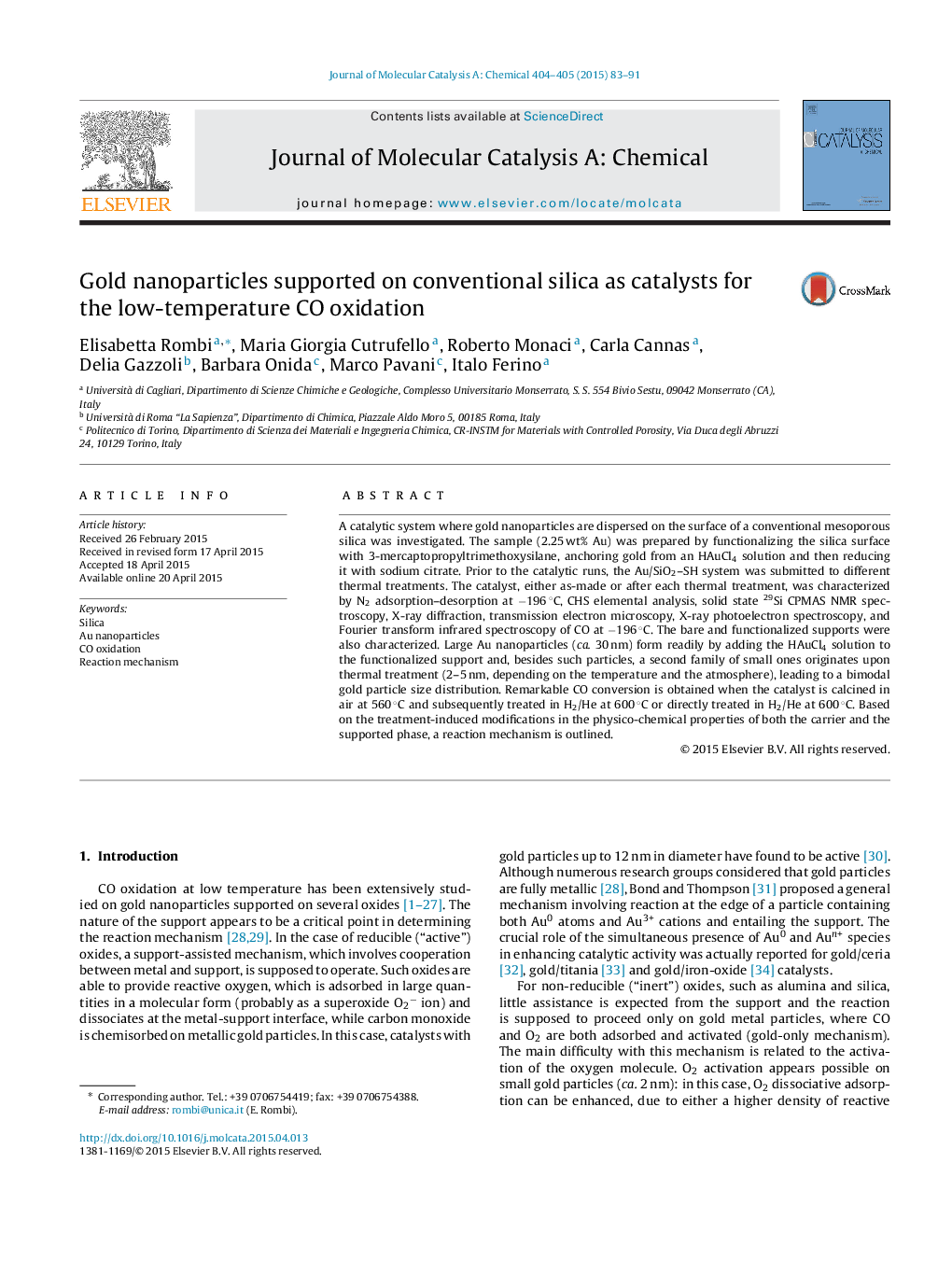| کد مقاله | کد نشریه | سال انتشار | مقاله انگلیسی | نسخه تمام متن |
|---|---|---|---|---|
| 64902 | 48374 | 2015 | 9 صفحه PDF | دانلود رایگان |

• H2-pretreated commercial SiO2-supported Au is active in low-temperature CO oxidation.
• High activity stems from the establishing of a silica-assisted mechanism.
• Worsening of activity occurs when a parallel gold-only mechanism takes place.
• Size distribution of small Au particles affects the relative extent of the two mechanisms.
A catalytic system where gold nanoparticles are dispersed on the surface of a conventional mesoporous silica was investigated. The sample (2.25 wt% Au) was prepared by functionalizing the silica surface with 3-mercaptopropyltrimethoxysilane, anchoring gold from an HAuCl4 solution and then reducing it with sodium citrate. Prior to the catalytic runs, the Au/SiO2–SH system was submitted to different thermal treatments. The catalyst, either as-made or after each thermal treatment, was characterized by N2 adsorption–desorption at −196 °C, CHS elemental analysis, solid state 29Si CPMAS NMR spectroscopy, X-ray diffraction, transmission electron microscopy, X-ray photoelectron spectroscopy, and Fourier transform infrared spectroscopy of CO at −196 °C. The bare and functionalized supports were also characterized. Large Au nanoparticles (ca. 30 nm) form readily by adding the HAuCl4 solution to the functionalized support and, besides such particles, a second family of small ones originates upon thermal treatment (2–5 nm, depending on the temperature and the atmosphere), leading to a bimodal gold particle size distribution. Remarkable CO conversion is obtained when the catalyst is calcined in air at 560 °C and subsequently treated in H2/He at 600 °C or directly treated in H2/He at 600 °C. Based on the treatment-induced modifications in the physico-chemical properties of both the carrier and the supported phase, a reaction mechanism is outlined.
Figure optionsDownload high-quality image (364 K)Download as PowerPoint slide
Journal: Journal of Molecular Catalysis A: Chemical - Volumes 404–405, August 2015, Pages 83–91